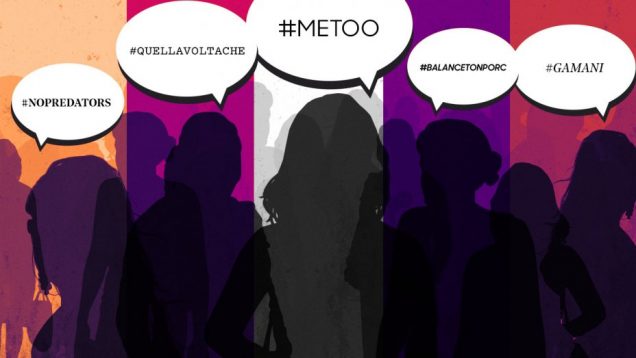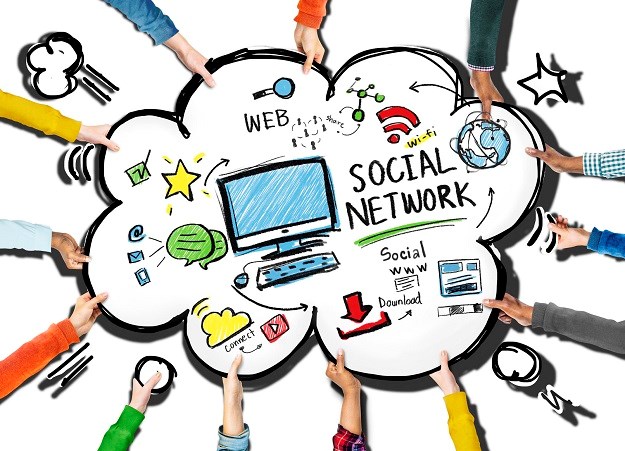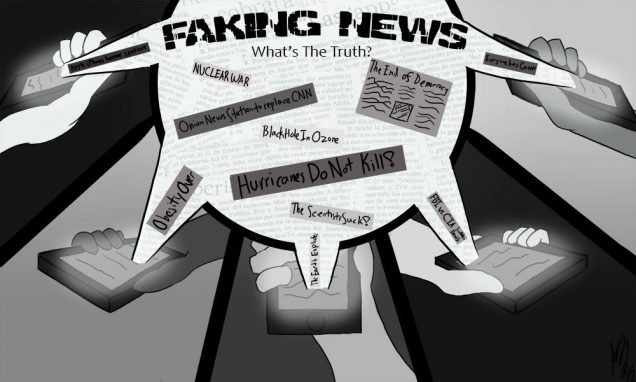Social media was immersed in a strong global “storm” in October, 2017. Alyssa Milano, an American actress, who firstly appealed for spreading the hashtag of “MeToo” on Twitter, led to a sensational movement that encouraged sexual harassment victims to bravely speak up their experiences to renew attention to the issue of sexual harassment in the workplace (O’Neil et al., 2018), and fight against those offenders both online and offline. The movement reached to various continents and regions around the world within only several months, and indirectly caused a bunch of social or legal activities while pushing the sexual harassment and assault to the cusp of the storm.

(Picture retrieved from: https://www.hollywoodreporter.com/news/how-metoo-movement-is-changing-showbiz-culture-worldwide-1061349 )
While almost a year went by, like many other social movements, whether happened on a virtual online world or in the real world, people were entering a period of calm and reflection after repeatedly experiencing different colliding facts and debates during the last 11 months. Some questions that raised for this movement gradually came into public’s sights. Some news institutions and social groups put their attention on finding out the role that social media platforms played in the MeToo movement, which including “why is social media rather than other types of media”, “is it the right platform for the MeToo movement (The Irish Times, 2018)?” If not, then where should we go to break the silence and get support? What do we get and loss in such a rapid spreading and growing movement occurred on these emerging information and communication technologies?
For those who used Facebook, Twitter, Youtube, and other social media platforms as a daily routine, you must have experienced similar situations, and could recall some benefits and harms brought by these technologies. Lu and Hampton (2017) indicated that social media was actually associated with higher levels of social capital. This conclusion had already been proved by existing researches and was interpreted that heavier intensity of social media usage might lead to a larger social network size which contained within relationships such as friends, family, and other acquaintances (Lu & Hampton). Why does this matter and how? Let’s return this result back to our real life context. Human will set up communities and organizations in every field of our society for either positive or negative purposes. The sense of belonging and the social relations established and maintained in those networks would become the ties that can pass along information (Rainie & Wellman, 2012). Social network, considered as notion related to the social capital, was a kind of resources embedded within social structure (Lin & Erickson, 2008) – we used it to glue the whole jigsaw puzzle of the society and information exchange chain.
However, things always go with two-sides, so does the social network reshaped and constructed by social media usage. I would separately compare the two sides to “outstretched hands” and “scattered daggers”.
The Irish Times once described the power of Twitter with following paragraph (2018):
“Twitter, much like many other social networks, is a powerful tool in the modern world. But with great power comes great responsibility, and a simple message composed of very few characters can have a huge impact in a short timeframe.”

(Picture retrieved from: http://tcfcr.com/the-significance-of-digital-and-social-media/)
The social network clustered and widened by the social media usage has improved the capability of message transition in our society. Robin Dunbar, an Oxford anthropologist, once proposed the famous concepts of “social brain” and “Dunbar’s number”, and argued that the upper limits of one’s cohesive relations was 150 (Rainie & Wellman). Besides the concepts of time and location is greatly weakened by the internet access, information and message is now carried and transmitted through tons of continuous divergent latent ties from one person to groups of others.
The “combo” of the social network and social media are widely regarded as positive among researchers. Hampton and colleagues (Hampton et al., 2016) argued that social media are particularly good at providing awareness of the activities and resources of social ties, and this “pervasive awareness is a result of frequent, short, asynchronous exchanges through social media (Lu & Hampton, 2017, p.864).” Back to the MeToo movement we mentioned above, social network are acting as a linker connect people in various races, regions, classes, and cultures through social media platforms, which we could considered as the “outstretched hands” holding together. And, the more hands hold together, the more powerful and stronger the network could be. United public from the relevant person to the irrelevant one, the size of network seriously affected the formation of social power, and eventually built up the mainstream of public opinion, as well as “catalyzed” social support.
What’s more, subculture groups and minorities, who were used to be edged in the society due to the deliberately control of the dominant groups, are standing more often on the stage on social media in nowadays. In a cross and relatively equal online social network environment, people’s positions and ideologies collide, merge and coexist together. Therefore, more than a simple linker, the network size is also growing into a potential renewable resource that can be used by anyone via internet. In addition to the individualism and customization of social media usage, people adjust their roles in different social networks for segmented tasks ((Rainie & Wellman). Such a reorganization and redistribution of social networks brings a new pathway of speaking up and social image reconstruction for those struggling under the spiral of silence, such as LGBTQ group, women, and etc.

(Picture retrieved from: http://www.laloyolan.com/opinion/student_columnists/fake-news-isn-t-just-social-media-s-fault/article_1568430a-9fd3-5a4d-931e-92cef70952cb.html)
However, negative consequences will also be emerged when there is a mutual integration of social media properties and network resources. For instance, fake news usually fabricate by one or several individual accounts on social media platform. However, the anonymity of online user, subjectivity of content, and difficulty of online information detection and tracking, are perfect support conditions for the born of fake news. Allying with online human social network, although users are mainly connected in weak ties, it will still promote the transmission of fake news because of a sense of “we may know a little about each other”, or “we may share a similar view or interest on this specific topic.” The process of spreading the fake news among everyone’s hierarchically embedded series of grouping layers (Dunbar, 2012) just like throwing thousands of daggers with no fixed route or aims – everyone may hit by the dagger and throw the dagger to any other individual at the same time.
Regardless of online or offline context, the essence of network size is the accumulation of human beings and the division of groups. The “Dunbar’s number” may still works, while the relationships have begun to transform the way they make a connect and influence among each other. Today’s network is not a simply expansion of size, but also is a more detailed formation of customized branches in the huge social layout. In some specific cases, the alienated weak ties, which was originally in the periphery, could be mobilized and elastically moving through the relationship layers defined by Dunbar. Therefore, the impact comes from the network size on the free social media environment could be way more powerful and unpredicted than ever. All in all, given to the role of being both “scattered daggers” and “outstretched hands” at the same time, further studies of network size in social media age are highly requested.
References
Dunbar, R. (2012). Social cognition on the Internet: Testing constraints on social network size. Philosophical Transactions of the Royal Society B, 367(1599), 2192-2201.
Hampton, K., & Katz, V. (2016). Persistent and Pervasive Community: New Communication Technologies and the Future of Community. American Behavioral Scientist, 60(1), 101-124.
Lin, Nan, Lin, N., Erickson, Bonnie, & Erickson, B. (2008). Social Capital: An International Research Program. Oxford University Press.
Lu, W., & Hampton, K. (2017). Beyond the power of networks: Differentiating network structure from social media affordances for perceived social support. New Media & Society, 19(6), 861-879.
O’Neil, Sojo, Fileborn, Scovelle, & Milner. (2018). The #MeToo movement: An opportunity in public health? The Lancet, 391(10140), 2587-2589.
Rainie, H., & Wellman, Barry. (2012). Networked : The new social operating system. Cambridge, Mass.: MIT Press.
The Irish Times. (2018, January 26). Is social media the right platform for #MeToo movement? Retrieved from https://www.irishtimes.com/student-hub/is-social-media-the-right-platform-for-metoo-movement-1.3369519